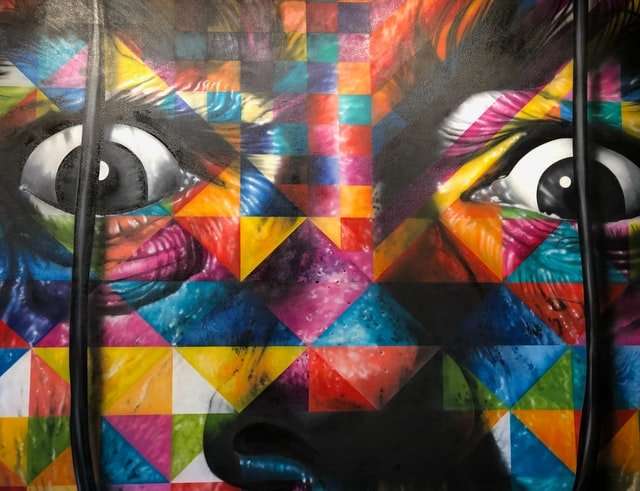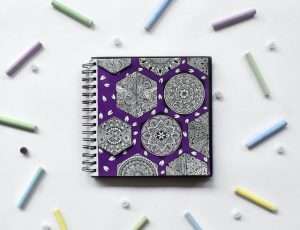The neoclassical art movement began during the Enlightenment. This movement developed as a reaction to the excesses of the Baroque and Rococo periods. Artists sought to create art that was more balanced, stable, and harmonious than what they saw as the “decadent” art of their day.
Towards this end, they turned to classical models – which they felt were more orderly and balanced – for inspiration. These models took the form of Roman and Greek architecture, sculpture and painting; they also drew from Egyptian and medieval designs.
The Style
Neoclassical artists often painted portraits of famous people or scenes from history or mythology. They favored ordinary, everyday subjects over elaborate depictions of religious scenes or fantastical subjects or settings. They also tended to use bright, clear colors rather than the muted shades of earlier periods. The bright colors of neoclassical art are a direct reflection of its focus on order and clarity: these paintings were meant to be appreciated by everyone, not just connoisseurs.
In general, neoclassical painters focused on a few strong elements rather than trying to cram everything in: they wanted to convey grandeur through simplicity. In this way, they hoped to capture something purer and more honest than what they
The neoclassical period of art is called the age of reason. The enlightenment was a time when people believed that they could understand everything and use that understanding to create rational, orderly societies. Everything that was not rational or orderly was discarded.
Neoclassical art appealed to the intellect and emotions of the viewer. It had clarity and orderliness, symmetry and simplicity. Artists adhered to the rules of proportion, perspective and balance when creating their art. Artwork during this period was meant to be intellectual rather than emotional.
The neoclassical period was also a time of revolution in France, America, England and other countries in Europe. The leaders in these revolutions saw themselves as the new citizens of a new era with new ideas. Neoclassical art was a way for artists to express their belief in the power of truth, reason, progress and enlightenment thought.
Traditional realism (the typical style before the enlightenment) moved toward romanticism during this period along with other forms of art such as literature, music and architecture. Realism focused on depicting everyday life often using romanticism’s ideals about nature which included emotion, supernatural elements and idealized characters.*
Neoclassical art refers to an artistic style commonly used between 1750 and 1800. The movement was a reaction to the Baroque and Rococo styles that preceded it. It is characterized by purity of detail, clarity of form, and idealization of the subject matter.
Towards the end of the 18th century, a more emotional Romantic style began to surface in art. Neoclassical art is sometimes referred to as academic art because it was taught at universities and academies throughout Europe.
Towards the end of the 18th century, a more emotional Romantic style began to surface in art. In particular, artists like Francisco Goya and William Blake began to reject classical ideals. Neoclassicism continued to be practiced well into the 19th century, but its popularity eventually waned as new movements came about such as Realism and Impressionism.
There are many neoclassical paintings. Neoclassical painters like Nicolas Poussin and Joshua Reynolds often used themes of Greek and Roman mythology. The paintings have a very formal, almost cold feel to them, in comparison to the Baroque style that preceded it. One of my favorite artists is Jean-Auguste-Dominique Ingres, who said of his paintings: “I am trying to paint with ideas instead of colors.”
Toward the end of the 18th century, neoclassical art was replaced by romanticism. Romanticism was based on the idea that nature and individual experience were more important than reason and order.*
Websites*: http://www.neoclassicism.org/ http://en.wikipedia.org/wiki/Neoclassicism http://www.artcyclopedia.com/artists/neoclassicism_movement.html
The neoclassical movement began in the late 18th century. The period saw the resurgence of interest in science and ancient Greek art, a reaction against the emotional Romanticism that preceded it.
Neoclassicism in art was inspired by numerous sources. Painters were drawn to the simple, ordered scenes depicted in many ancient Greek paintings as well as to their sophisticated use of perspective and proportion. To achieve similar effects, they carefully studied geometry and practiced their perspective skills in paintings like Francois Boucher’s “The Swing.”
Neoclassical artists also followed the example of Greek sculptors, who often portrayed idealized figures that represented ideals of beauty rather than real people. Many painters such as Jacques Louis David aimed for similar ideals in their work. They strove to create works that would be widely appreciated rather than controversial or shocking.
Ludwig van Beethoven is widely considered one of history’s greatest composers. His Symphony No. 9 is one of his most famous pieces of music. It was first performed on May 7th, 1824 at a concert hall in Vienna, Austria. It was written during the Napoleonic Wars, a period marked by destruction and war across Europe. In fact, it became a symbol for peace after its performance on May
Neoclassical art is a style of art that was popular during the late eighteenth and early nineteenth centuries. It was an artistic movement that started in France and spread to much of Europe. It was a reaction to the preceding Baroque and Rococo styles. Neo-classicism had its immediate roots in the academies established by the monarchs of Europe, especially Louis XIV of France, who reigned from 1643 until 1715.
The Enlightenment (or Age of Enlightenment) was an intellectual movement in Western Europe emphasizing reason and individualism rather than tradition. Scholars have seen it as a break with the past, more specifically with the 18th century, and have named it after the 18th century philosophy called “Enlightenment.” The Enlightenment has had a powerful influence on history, including on 18th-century European culture, and played a major role in shaping modern political ideas. Some noteworthy individuals who were active during this period are Voltaire, Jean-Jacques Rousseau, Denis Diderot, David Hume, Immanuel Kant, Baron d’Holbach, Benjamin Franklin and Thomas Jefferson.
Tone:informative
Neoclassical art is a period of art that lasted from the mid 18th century until around 1820. In this period, there was an increased interest in classical antiquity and its art. Many artists and architects looked to the art of ancient Greece and Rome for inspiration and guidance on how to create more formal and idealized forms of art. The style was more concerned with order, symmetry, balance, and proportion.
This kind of artistic movement has been called “The Heroic Age of Painting”, since it was seen as a time when artists could depict beauty in a more idealized way that had not been possible before.
Neoclassical painting is often regarded as one of the most important periods in the history of Western painting. It’s also when many famous painters were active and made their names. One of the most famous artists to practice neoclassicism was Jacques Louis David (1748-1825). He is best known for his paintings “Oath of the Horatii” (1784) and “Death of Socrates” (1787).


